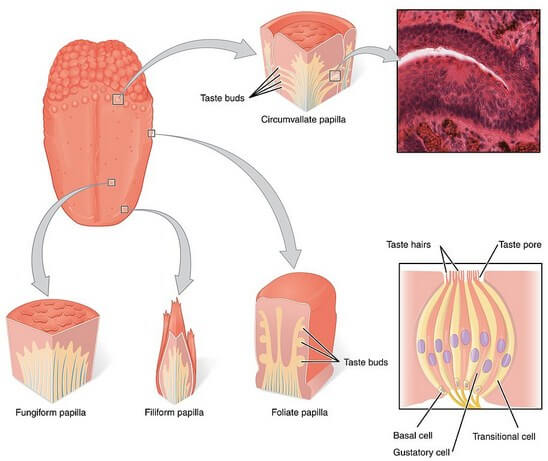
Exteroceptors
These receptors are distributed superficially in the layers of skin and subcutaneous tissue. Exteroceptors are stimulated by external stimulus like–touch, pressure, pain by mechanical or chemical trauma and alteration of temperature. These receptors are more accurately called general exteroceptors. Exteroceptors for perception of sense of smell (olfactory), vision (visual), hearing (acoustic) and taste (gustatory) are called special exteroceptors.
Proprioceptors
When a joint moves due to contraction of a muscle or a group of muscles, we can feel it. This is called sense of movements. Again, due to contraction of muscle, when a part of body is stretched or adjusted, we can also feel it. This is called sense of position. These feelings or perceptions are because of impulse that are carried through chain of sensory neurons from concerned part of periphery of body to central nervous system. The informations are carried from peripheral end organs located in muscles, tendons and joints. These sensory end organs are called general proprioceptors.
Specialized receptors are located in specialized site of internal (innermost) ear, whose function is related to perception and maintenance of balance or equilibrium of body. These are called special proprioceptors. Impulse is carried through vestibular component of vestibulocochlear nerve (eighth cranial nerve).
Interoceptors
Both exteroceptors as well as proprioceptors, defined above, are related to endings of somatic sensory nerves, thus carry sensations called somatic sensations. There are various sensations carried from viscera.
These are sense of pain (due to ischemia), stretch,carried through autonomic sensory nerves. The sensory end organs in the wall of viscera from where these sensations are carried, are called interoceptors. So, receptors are classified through following table:
In this chapter, general receptors (general exteroceptors and general proprioceptors) are described. For special receptors, the reader is to consult the chapters of respective sensory pathways.
Source: Easy and Interesting Approach to Human Neuroanatomy (Clinically Oriented) (2014)